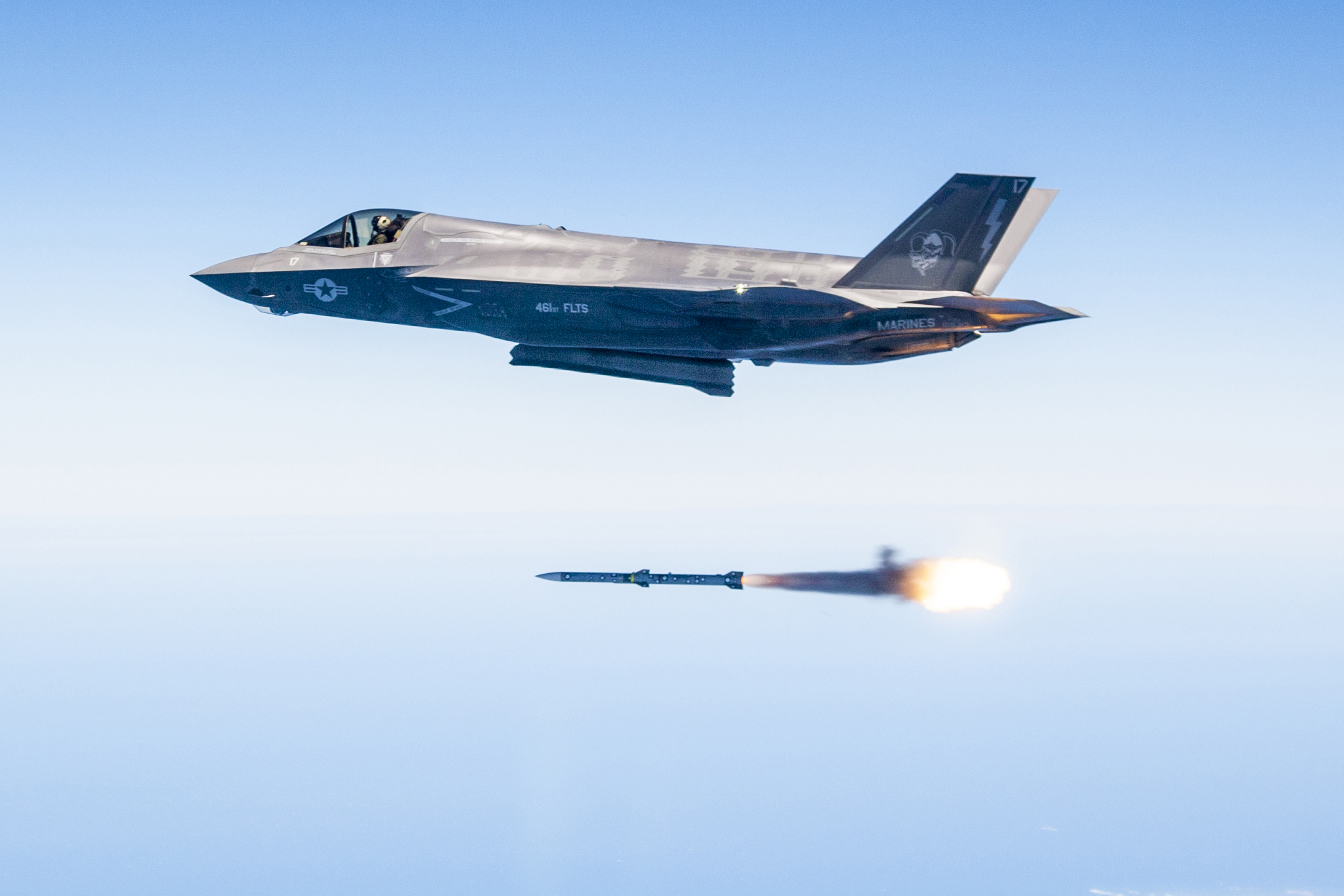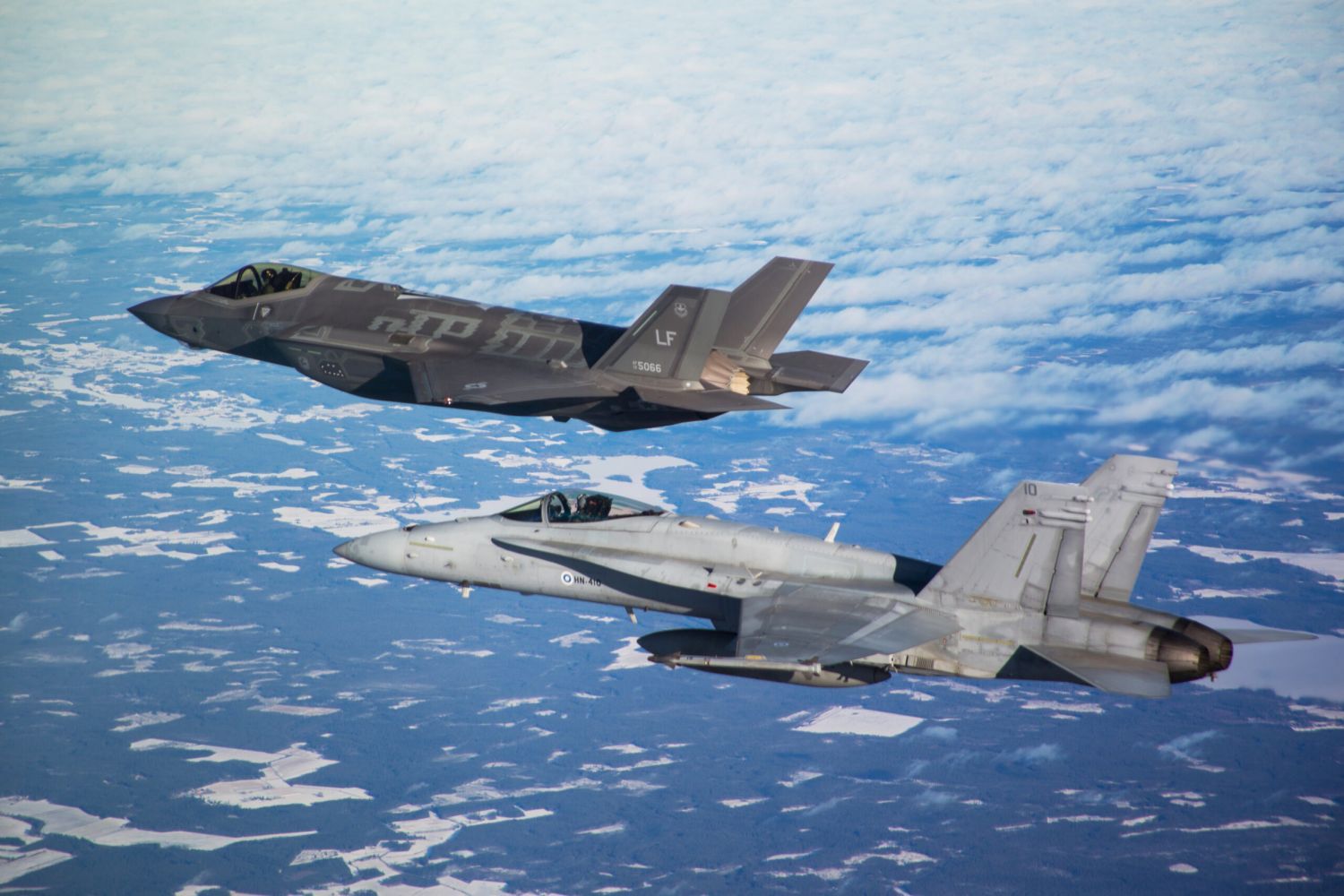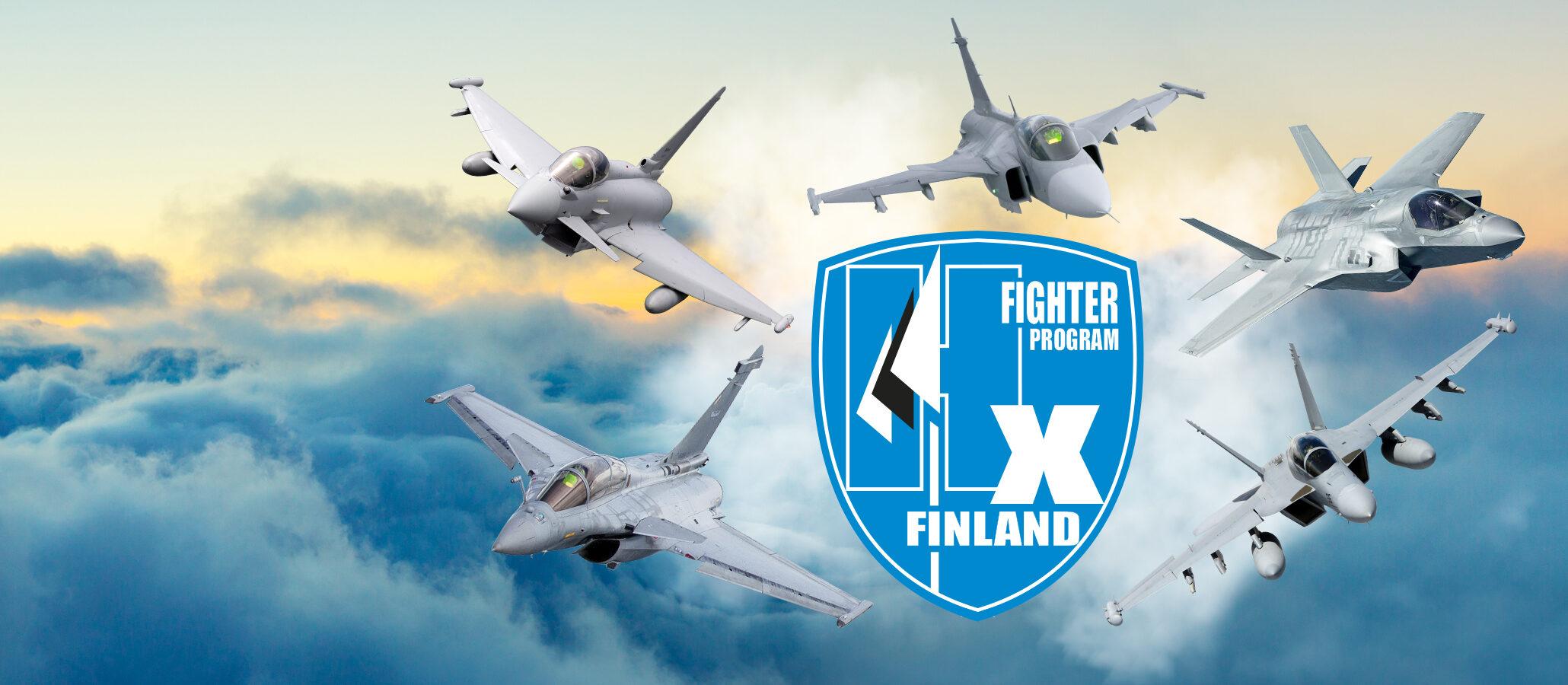Confirmed! Finland also chose the Lockheed Martin F-35
As we announced on Monday, the Finnish Air Force has declared the only fifth-generation contender, the F-35 Lightning II, the winner of the HX competition and has just officially announced it.
According to the press release issued by the Air Force, the Government authorizes the Finnish Defense Forces Logistics Command to sign a procurement contract with the U.S. Government for Finland’s next multi-role fighter. The fighter that will replace the current F/A-18 Hornet fleet is the Lockheed Martin F-35A Lightning II.
With its selection of @thef35, Finland becomes the latest nation to choose the program. We’re honored to deliver this advanced capability, enabling Finnish forces to protect and secure its borders for years to come. pic.twitter.com/OLxMZuei31
— Lockheed Martin (@LockheedMartin) December 10, 2021
The procurement includes 64 F-35A Block 4 multirole fighters, a substantial and versatile armament package, required training and maintenance solutions, other related systems and sustainment services through the end of 2030.
In the evaluation of the HX Fighter program bids, the F-35 met the security of supply, industrial participation and affordability requirements of the decision domains. In the evaluation of military capability, the F-35 end-to-end system was the best. The F-35 stood out against the other HX program candidates for its combat, reconnaissance and survivability capabilities.
The operating and maintenance costs of the F-35 are in line with the allocated cost framework, and the operation of the aircraft throughout its life cycle will be feasible within the normal resources of the Finnish Defense Forces. Within the procurement process, several essential security of supply requirements and significant industrial participation have been agreed. The essential security of supply requirements relate specifically to the independent capability to operate in exceptional circumstances.
The F-35 program is multinational and its user community is broad. The system is in service in many European nations, including Norway and Denmark. In fact, it is becoming the de facto common European 5th generation air combat system.
The current Hornet fleet will be phased out on schedule starting in 2025. The first Finnish F-35 fighters will begin service with the Finnish Air Force in 2025 as part of Finnish personnel training in the United States. The first F-35s will be delivered to Finland in 2026. In Finland, the F-35 system will replace the Hornet fleet in the fighter wings between 2028 and 2030.
Why did the F-35 beat the competition?
The Finnish Air Force press release sets out the results of the HX competition for the F-35 and justifies, clearly and forcefully, in these its choice.
In the HX competition, the F-35 passed the essential decision criteria of security of supply, industrial participation and affordability. In addition, the F-35 solution had the highest operational effectiveness and the greatest potential for future growth in the capabilities evaluation.
Security of supply
The F-35 solution meets Finland’s national security of supply requirements. System maintenance is based on the F-35 global maintenance solution, tailored to meet national security of supply requirements. The critical maintenance capability will be built in the Defense Forces and national industrial organizations. The solution encompasses maintenance capabilities to be built in Finland, as well as spare components and replaceable assemblies for exceptional circumstances that are under Finland’s exclusive national control, as well as participation in the multinational maintenance network.
Affordability
The F-35 solution adjusted to the allocated funding framework was the most cost-effective. The F-35 had the lowest acquisition cost when all aspects of the offer are taken into account. Operating and maintenance costs for the system will be below the €254 million annual budget. F-35 operations and life cycle development will be viable within the resources of the Defense Forces.
No bid was significantly less expensive than others in terms of operation and maintenance costs.
Industrial Participation
The F-35 industrial participation offer met the quality and content requirements. The industrial participation offered is primarily focused on direct industrial cooperation that will create significant independent maintenance capabilities. The industrial participation solution will develop credible know-how in the domestic industry from the security of supply point of view and become an important driver of the domestic economy.
Major industrial participation projects include large-scale production of the F-35 forward fuselage in Finland for Finnish fighters and other users, production of structural components, and equipment testing and maintenance capabilities. In addition, Finland has been offered an engine final assembly project for its own aircraft.
The industrial participation will have a direct national employment impact of 4,500 people and an indirect impact of 1,500 people per year.

The industrial participation contract will be signed by the Ministry of Defense, as well as Lockheed Martin and engine manufacturer Pratt & Whitney.
Military capability of the F-35
The F-35 system capability was best suited for the Finnish operating environment and HX requirements. The aircraft’s end-to-end system and capabilities in combat, reconnaissance and survivability are unsurpassed. The F-35 ranked first in the evaluation or shared the highest score in all mission areas and achieved the highest overall score. The proposed F-35 package will accomplish the defined tasks with sufficient effectiveness with respect to the requirements of the future operational environment. The number of aircraft and armament included in the offer influenced the result. The Finnish F-35 fleet can reach operational capability on schedule.
The F-35 will be an important addition to the entire defense system and will enhance the defense system’s preemptive capability. The F-35A is capable of initiating action in anti-aircraft operations, as well as generating and sharing the necessary situational awareness and target data, enabling the F-35 to better support land and maritime operations. The F-35’s multi-domain effectiveness in the air, on land and at sea received the highest rating in the evaluation. Stealth and other unique features, such as sensors and its networked operation capability, support the F-35’s survivability in combat. The F-35 multirole fighter has the largest internal fuel capacity and all built-in sensors, eliminating the need for an external targeting system or fuel tank.
The technological solution of the F-35 system is sustainable and its future growth potential is the best among the systems offered. Development has been guaranteed for the entire life cycle until the 2060s.
Procurement package
The subject of the procurement is 64 F-35A multirole fighters in Block 4 configuration. The procurement covers the armament of the multirole fighters. The offered F-35 package includes the following types of weapons: AMRAAM, Sidewinder, SDB I and II, JDAM family armament, JSM and JASSM-ER. The armament is to be procured within the availability of program funds by the end of 2035. The weapon package will be optimized during the acquisition process, taking into account the availability of the latest weapon types and changes in the operating environment. With an optimized weapons acquisition, the system capability will be maximized in the Finnish operating environment and the F-35 system life cycle will be ensured for as long as possible.

A notable number of additional products and services to be procured simultaneously are related to the acquisition of the combat system and its use. These include the sustainment system, which includes test equipment, tooling, assembly services and replaceable spare parts, as well as information systems, training systems and services, mission support systems and related services, and administrative services related to the U.S. Government’s Foreign Military Sales (FMS) acquisition process. The procurement package also includes fleet sustainment costs for the years 2025-2030.
Acquisition financing
Funding for the HX program amounts to €10 billion. Parliament has granted the fighter program an acquisition authorization of €9.4 billion for the procurement of the Hornet replacement system and €579 million from a five-year transferable allocation. The transferable allocation is intended to ensure that the F-35 enters service and is integrated into the Finnish defense system. So far, €21 million has been spent in preparation for the acquisition.
Acquisition costs
The procurement is equivalent to about 8,378 million euros. The cost of the multi-role fighters is €4.7 billion and that of the AMRAAM and Sidewinder air-to-air missiles is €754.6 million (initial armament package). Service equipment, spare and replacement parts, training and maintenance solutions, other related systems and maintenance services until the end of 2030 cost €2.9 billion.
The operational facilities, aircraft hangars and storages, as well as runway structures and the procured system infrastructure will be built in Finland. This is based on national and international safety and security requirements. Construction costs, industrial participation costs, personnel costs and other project costs amount to EUR 777 million.
In addition, EUR 823.8 million is set aside for the final optimized armament package and for controlling future modifications to the contract. Some of the armament will be procured at a later date, depending on the aircraft delivery schedule.
The end of strategic neutrality?
As was the case with Switzerland’s choice of its new fighter, it is partly surprising that Finland opted for the F-35, an aircraft designed basically as an offensive system.
The technical and economic reasons that gave the advantage to Lockheed Martin’s product in Finland’s HX program are clear and consistent with the results obtained by the Swiss in their own program. The F-35 is the most advanced fighter, the one with the greatest survivability, the one with the most promising future, and even the one with the best cost-benefit ratio over its life cycle.
But is it the best weapon system for a national border protection strategy? It is certainly not an aircraft designed to be a fast and agile interceptor, like a Gripen or F-16, or to maintain air superiority like a Typhoon or F-22.
So how can the F-35 best safeguard Finland’s sovereign interests? Perhaps the first answer should be, by deterrence. The great advantage the F-35 has over its previous-generation rivals is that its stealth and advanced sensors allow it to initiate combat actions in the most favorable situations. And unleash retaliation with near impunity. It is very difficult to battle an enemy that sees you while remaining out of sight and can strike suddenly in sensitive areas. The greatest defensive effectiveness of the F-35 is its deterrent power.
Another explanation, but complementary to the first one, is that Europe is hardening its stance towards Russia and decides to move, more or less as a whole, from a generally defensive historical attitude to one of joint threat to the military power of the Kremlin. For which the F-35, the only 5th generation stealth weapon system currently available on the market, is more suitable.
In short, the F-35 won again in Europe and is showing how difficult it is for previous-generation fighters to meet the Lightining II on a level playing field. Technological advantage and future growth potential are the F-35’s winning cards, and against that, there is not much that aircraft like the Rafale, Gripen, Super Hornet or Typhoon can do.






Para comentar, debés estar registradoPor favor, iniciá sesión